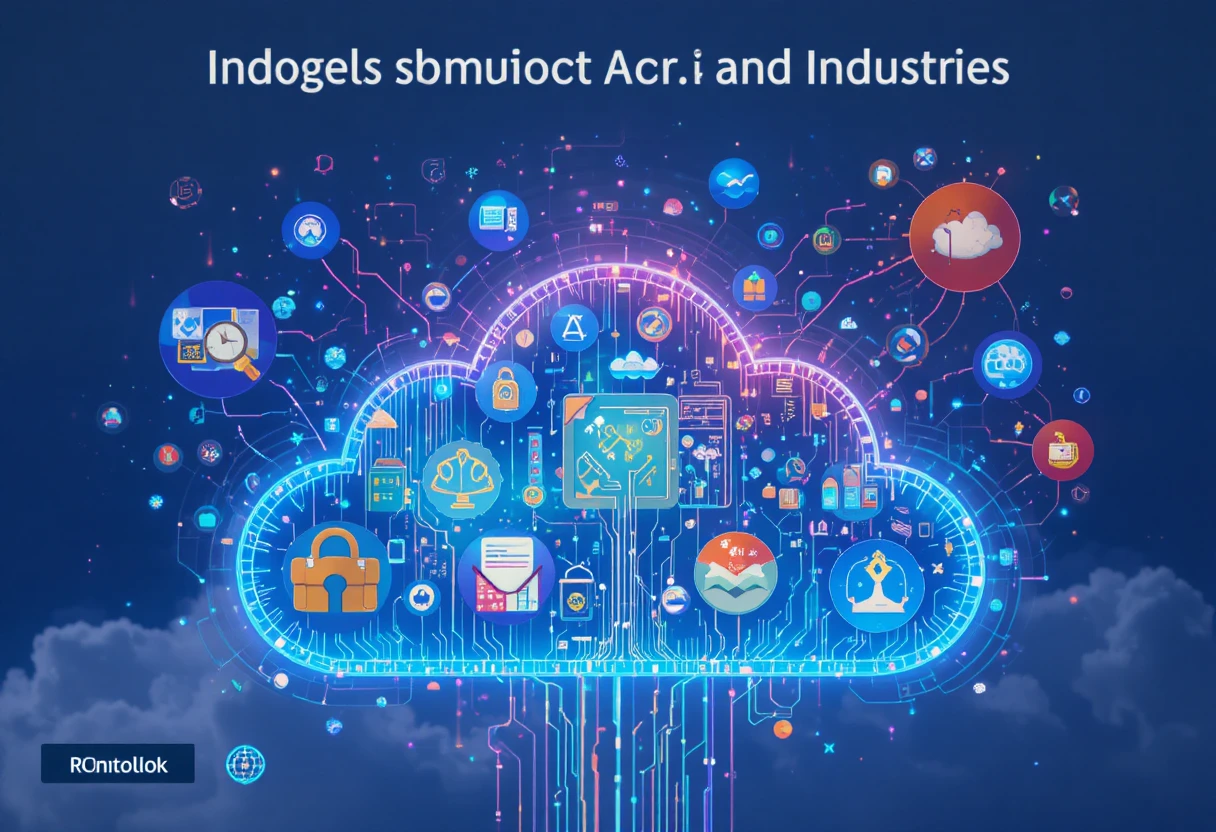Cloud computing has revolutionized the way businesses, governments, and individuals store, process, and access data. By delivering computing resources over the internet, cloud computing eliminates the need for physical infrastructure, offering scalable, cost-effective solutions that power everything from startups to global enterprises. As of October 2025, cloud computing is a cornerstone of the digital economy, driving innovation in artificial intelligence, big data, and the Internet of Things (IoT). This comprehensive 3000-word post explores the history, technology, benefits, challenges, and future of cloud computing, shedding light on its transformative impact.
What Is Cloud Computing?
Cloud computing refers to the delivery of computing services—such as servers, storage, databases, networking, software, and analytics—over the internet, or “the cloud.” Instead of owning physical hardware, users access these resources on-demand from providers like Amazon Web Services (AWS), Microsoft Azure, and Google Cloud Platform (GCP). The cloud offers flexibility, allowing businesses to scale resources up or down based on need, paying only for what they use.
Core Components of Cloud Computing
Cloud computing is built on virtualization, where physical hardware is abstracted into virtual resources. Key components include:
- Compute: Virtual machines and containers for processing tasks.
- Storage: Scalable solutions like object, block, and file storage.
- Networking: Virtual networks for secure data transfer.
- Services: Pre-built tools for AI, machine learning, analytics, and more.
Types of Cloud Computing Models
Cloud services are categorized into three primary models:
- Infrastructure as a Service (IaaS): Provides raw computing resources (e.g., AWS EC2).
- Platform as a Service (PaaS): Offers development platforms (e.g., Google App Engine).
- Software as a Service (SaaS): Delivers ready-to-use software (e.g., Salesforce, Dropbox).
Additionally, deployment models include public clouds (shared infrastructure), private clouds (dedicated to one organization), and hybrid clouds (combining both).

The History of Cloud Computing
The concept of cloud computing has roots in the 1960s, when computer scientist John McCarthy envisioned computing as a public utility. However, practical advancements began in the 1990s with the internet’s growth. Early milestones include the launch of Salesforce in 1999, which pioneered SaaS by delivering CRM software online. In 2002, Amazon introduced AWS, initially for internal use, before opening it to the public in 2006 with services like S3 (storage) and EC2 (compute).
Key Milestones
- 2000s: The rise of virtualization technologies, like VMware, enabled efficient resource sharing. Google’s App Engine (2008) popularized PaaS, while Microsoft Azure launched in 2010, intensifying competition.
- 2010s: Cloud adoption soared as businesses embraced digital transformation. Netflix’s migration to AWS showcased the cloud’s scalability, while open-source platforms like OpenStack democratized private clouds.
- 2020s: By 2025, cloud computing dominates, with global spending projected to exceed $1 trillion annually. Edge computing and AI integration have expanded the cloud’s role in real-time applications.
Evolution of Providers
AWS remains the market leader with over 30% share, followed by Azure and GCP. Emerging players like Alibaba Cloud and IBM Cloud cater to specific regions and industries. The evolution reflects a shift from niche experiments to a global infrastructure supporting everything from streaming to scientific research.
How Cloud Computing Works: The Technology Behind It
Cloud computing relies on a complex ecosystem of hardware, software, and networking. Data centers, often spanning thousands of servers, form the backbone. These centers use virtualization to create multiple virtual machines on a single physical server, optimizing resource use. Hypervisors like KVM or Hyper-V manage these virtual environments.
Key Technologies
- Virtualization and Containers: Containers (e.g., Docker, Kubernetes) package applications with their dependencies, ensuring portability across clouds.
- APIs and Microservices: APIs enable seamless interaction between cloud services, while microservices break applications into modular components for flexibility.
- Networking: Software-defined networking (SDN) and content delivery networks (CDNs) ensure fast, secure data transfer.
- Security: Encryption, identity management, and zero-trust architectures protect data.
Scalability and Elasticity
The cloud’s hallmark is its ability to scale. Elastic Load Balancers distribute traffic, while auto-scaling adjusts resources based on demand. For example, during Black Friday, e-commerce platforms like Shopify scale up to handle traffic spikes, then scale down to save costs.
Data Management
Cloud databases (e.g., Amazon RDS, Google BigQuery) handle massive datasets, supporting real-time analytics. Object storage systems like AWS S3 store unstructured data, such as videos or IoT sensor outputs, with high durability (99.999999999% in S3’s case).

Benefits of Cloud Computing
Cloud computing offers transformative advantages, making it indispensable for modern organizations and individuals.
Cost Efficiency
The pay-as-you-go model eliminates upfront hardware costs. Small businesses can access enterprise-grade infrastructure without investing in data centers. For instance, startups like Airbnb scaled rapidly using AWS, avoiding millions in capital expenditure.
Scalability and Flexibility
Businesses can scale resources instantly, accommodating growth or seasonal demand. During the 2020 pandemic, Zoom leveraged Azure to handle a 20-fold surge in video conferencing traffic.
Accessibility and Collaboration
Cloud services enable global access to data and applications, fostering remote work. Tools like Google Workspace and Microsoft 365 allow teams to collaborate in real-time, boosting productivity.
Innovation Enablement
The cloud democratizes access to advanced technologies. AWS’s SageMaker provides AI tools to developers without expertise, while GCP’s BigQuery processes petabytes of data for analytics, enabling innovations in healthcare, finance, and more.
Disaster Recovery
Cloud-based backup and recovery solutions ensure data resilience. Companies like Veeam offer cloud-native disaster recovery, minimizing downtime during outages.
Challenges and Limitations of Cloud Computing
Despite its benefits, cloud computing faces significant hurdles that organizations must navigate.
Security and Privacy Concerns
Data breaches remain a top concern, with high-profile incidents exposing vulnerabilities. In 2024, a misconfigured AWS S3 bucket led to a major leak, underscoring the need for robust security practices. Compliance with regulations like GDPR or HIPAA adds complexity.
Downtime and Reliability
While providers guarantee high uptime (e.g., AWS’s 99.99% SLA), outages occur. A 2023 Azure outage disrupted global services, highlighting dependency risks. Multi-cloud strategies mitigate this but increase costs.
Cost Management
Hidden costs, like data transfer fees or over-provisioning, can inflate bills. A 2025 report estimated 30% of cloud spending is wasted due to poor optimization. Tools like AWS Cost Explorer help, but require expertise.
Vendor Lock-In
Proprietary cloud ecosystems can trap users, making migration difficult. For example, switching from AWS to Azure involves reconfiguring applications, incurring time and cost.
Latency and Performance
For latency-sensitive applications like autonomous vehicles, cloud processing can be too slow. Edge computing addresses this, but requires additional infrastructure.
The Impact of Cloud Computing on Industries
Cloud computing has reshaped industries, enabling new business models and efficiencies.
Healthcare
Cloud platforms like Azure Healthcare APIs enable secure storage of patient data and AI-driven diagnostics. Telemedicine platforms scaled rapidly during the pandemic, leveraging cloud elasticity.
Finance
Banks use cloud-based AI for fraud detection and risk analysis. JPMorgan Chase adopted AWS for real-time transaction processing, improving customer experience.
Retail and E-Commerce
The cloud powers personalized shopping experiences. Amazon’s recommendation engine, running on AWS, analyzes billions of data points to drive sales.
Education
Cloud-based learning platforms like Coursera host courses for millions, while universities use GCP for research computing, such as genomic analysis.
Environmental Impact
Cloud data centers consume significant energy, but providers are adopting renewables. Google aims for carbon-neutral operations by 2030, while AWS invests in sustainable cooling technologies.

Current Trends in Cloud Computing (2025)
As of 2025, cloud computing is evolving rapidly. Key trends include:
- Edge Computing: Processing data closer to its source for low-latency applications like IoT and autonomous vehicles.
- AI and Machine Learning: Cloud platforms integrate AI tools, with AWS Bedrock and Azure AI leading in generative AI services.
- Serverless Computing: Services like AWS Lambda allow developers to run code without managing servers, reducing costs.
- Multi-Cloud and Hybrid Cloud: Organizations use multiple providers to avoid lock-in, with 80% of enterprises adopting hybrid strategies.
- Sustainability: Providers invest in green data centers, with Microsoft’s underwater data center experiment reducing energy use.
Market growth is robust, with global cloud spending projected to hit $1.3 trillion by 2028. China’s cloud market, led by Alibaba, is expanding, while Europe emphasizes data sovereignty with initiatives like Gaia-X.
The Future of Cloud Computing
The future of cloud computing is poised for further disruption, driven by technological and societal shifts.
Quantum Computing Integration
Quantum cloud services, like AWS Braket and IBM Quantum, are emerging, promising breakthroughs in cryptography and drug discovery. By 2030, quantum computing could revolutionize cloud-based simulations.
Enhanced Security
AI-driven security will combat evolving threats. Zero-trust architectures and quantum encryption will become standard, ensuring data integrity.
Edge and 5G Synergy
The rollout of 6G by 2030 will enhance edge computing, enabling real-time applications like smart cities and autonomous drones. Cloud providers will invest in distributed edge nodes.
Democratization and Accessibility
Low-code and no-code platforms will make cloud services accessible to non-technical users, empowering small businesses and creators. Initiatives like AWS’s Amplify target this trend.
Sustainability Focus
Providers will prioritize carbon-neutral operations, with innovations like liquid cooling and AI-optimized energy use. By 2035, the cloud could reduce global emissions by enabling efficient industries.
Cloud Computing vs. On-Premises Solutions
The debate between cloud and on-premises infrastructure persists. Cloud offers scalability and cost savings but raises security concerns. On-premises solutions provide control but require significant investment. Hybrid clouds bridge the gap, with 60% of enterprises adopting them by 2025.
Why Choose the Cloud?
Startups and SMBs favor the cloud for its affordability and flexibility. Large enterprises use it for global reach and innovation, as seen with Netflix’s AWS-based streaming.
Why Stick with On-Premises?
Industries like defense or healthcare, with strict compliance needs, prefer on-premises for data control. However, hybrid models are reducing this divide.
Case Studies: Cloud Success Stories
- Netflix: Migrated to AWS, enabling global streaming for 250 million users with 99.99% uptime.
- Spotify: Uses GCP for data analytics, processing billions of user interactions to personalize playlists.
- NASA: Leverages AWS for Mars rover data, enabling real-time analysis for scientists worldwide.
Conclusion
Cloud computing has transformed the digital world, offering unparalleled scalability, accessibility, and innovation. While challenges like security and cost management persist, the cloud’s benefits—cost efficiency, flexibility, and global reach—make it indispensable. As we move toward 2030, trends like edge computing, AI integration, and sustainability will shape its evolution, cementing its role as the backbone of the digital economy. From healthcare to entertainment, cloud computing empowers industries and individuals, driving a future where data and computing power are universally accessible.